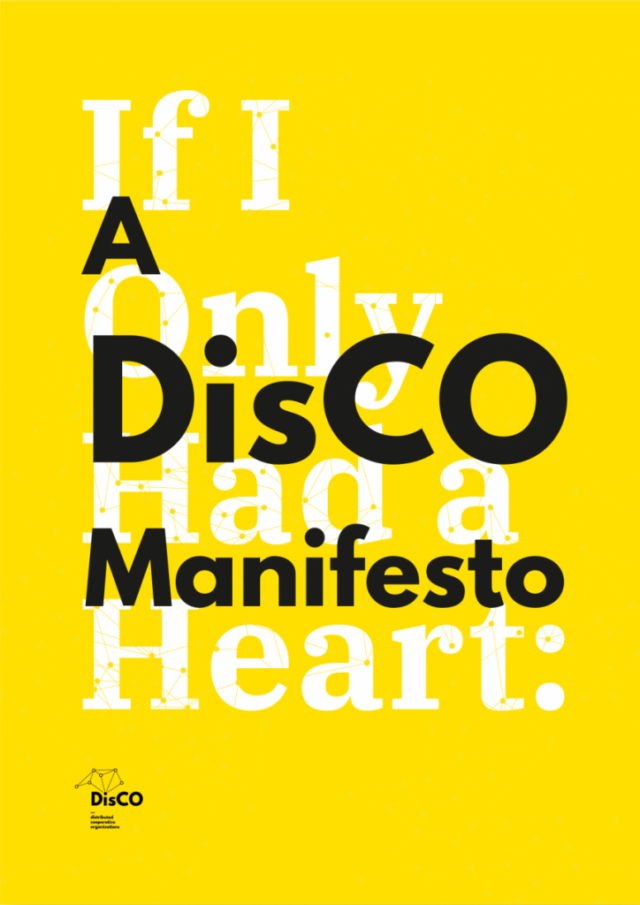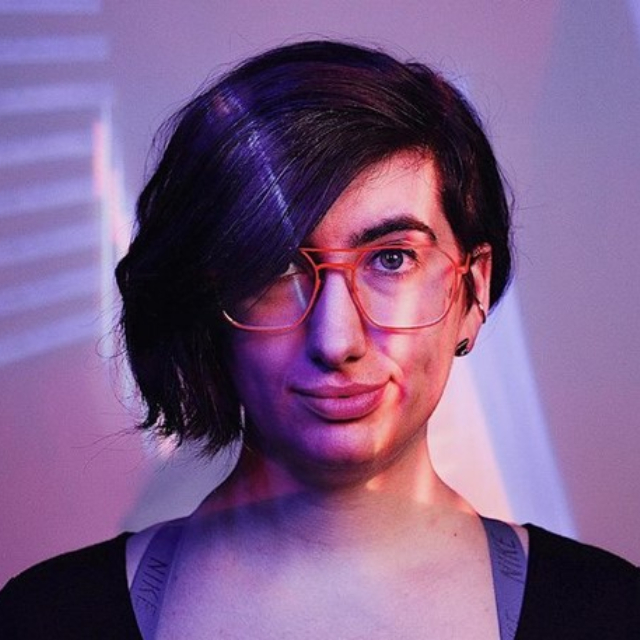← Explore
“I think of funding my artistic practice in two ways: personal stability and project stability. One allows me to pay rent and wear cool sneakers; the other pays for the material costs of producing art.”
DEL resident Izzie Colpitts-Campbell is a designer who works with the body, leather, code and computational fashion. She currently works as a UX Lead on Platform at Shopify where she works designing developer tools for the app platform. Through her work as president of Dames Making Games and member of the board at the Toronto Media Arts Centre, she is devoted to supporting and educating artists interested in software and electronic arts.
Q: How has the pandemic changed, influenced, or impacted your approach to artmaking? What will be different for you going forward?
A: The pandemic has really affected the tools I use for collaboration. It has also meant that I have less mental energy for being creative. I’ve worked very hard to try and move the work that I do safely and inclusively online, but it’s been a lot of relearning how to create remotely. Particularly in my personal creation, where I do so much physical work. On a more positive side, I’ve had a lot of time to think. It’s made everyone kind of collectively slow down a bit and be more intentional about how and who we engage. I hope I continue this post-pandemic.
Q: How do you fund your artistic practice? What would it take to live off your art?
A: I think of funding my artistic practice in two ways: personal stability and project stability. One allows me to pay rent and wear cool sneakers; the other pays for the material costs of producing art: labour, fabrication, space, etc. For the first, I have a full on 9-5 running a UX team. I think of it as my trade which draws a lot on my practice as a software and electronic artist and community organizer. I grew up with many artistic role models who supported their practice with professional work and so I took this model on. For the second, most of the time it’s subsidized by my day job and sometimes happily covered by grants, residencies, and sponsorships. To live off my art the potential income would have to be more stable and properly account not only for production expenses but also compensate me fairly for my time.
“I don’t always do the best job figuring out how to make this space [for connecting with collaborators], so I try to organize my schedule so that I have large swaths of time dedicated to more involved artistic projects.”

Izzie recommends:
Stacco Troncoso & Ann Marie Utratel, If I Only had a Heart: A DisCO Manifesto (2019)
Stacco Troncoso & Ann Marie Utratel, If I Only had a Heart: A DisCO Manifesto (2019)
Q: How would your approach to artmaking change if you didn’t have to worry (as much) about making money?
A: I actually decided to stop freelancing and take on a 9-5 job to do this as I wanted to have clearer boundaries between my stable income and my creative work. I was spending so much time working on small projects and chasing the next paying gig that I had no time for my personal practice. This has enabled me to be able to give back many resources to the artistic communities I participate in, though it does mean my job is a bit more disconnected from the work I do as an artist and community organizer. There are pros and cons to both approaches to practice, but I think I’ve managed to find a balance where the trade offs work for me (at the moment).
Q: What tools, techniques, or resources have helped you do more with less?
A: Amazing, intelligent, and resourceful collaborators—community networks and mutual aid have been my biggest asset. Working within my various communities to share resources and understand how we can support each other and include more amazing marginalized folks. I follow this not only in my artistic practice but in where I spend my time and money everyday.
Q: When do you do your best work? How do you make space to do your best work?
A: After much relaxation, coffee and flouncing about. I need space and amazing folks to work with. I’m highly motivated when talking through things with friends and collaborators. I don’t always do the best job figuring out how to make this space, so I try to organize my schedule so that I have large swaths of time dedicated to more involved artistic projects.
